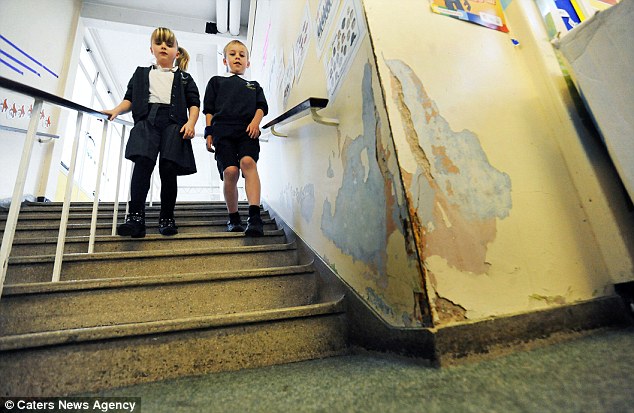Just like the NHS and other public institutions, our education system is suffering from the disastrous consequences of inadequate funding.
Funding per pupil has been in a state of decline since the Coalition government took over in 2010, when funding was at its peak. Whilst the latest budget takes real-terms funding back to those 2010 levels, it’s a long way short of repairing the damage done by over a decade of deficiency.
As a teacher, I experienced and witnessed the effects of this decline, I always found it infuriating when government spokespeople spouted their misleading stock phrase – “more funding than ever before”.
Sure, the gross amount of money spent on education went up year on year. But pupil numbers have increased at a much higher rate than the funding, which means a severe decline in real-terms funding per pupil.
As a result, school leaders have had to make more and more cuts to stay within their ever-tightening budgets, with damaging and far-reaching consequences.
So, how does this affect our kids?
Staff shortages
Staff are schools’ most important resource. They’re also the most expensive. Sadly, this means it’s often the first place leaders turn to when they need to make cuts.
When schools reduce the number of teachers, it leads to increased class sizes and increased workloads and stress for the remaining teachers. Children are less likely to get the support they need.
Fewer teachers means less expertise and less diversity of skillsets. Teachers need to take on extra responsibilities that may not be their area of strength. This means the rich and meaningful curriculum that is so high on the government’s agenda is harder to implement.
This extra strain on teachers leads to more of them taking time off work or at worst, leaving the profession. It’s a vicious cycle. I cover this issue in more detail in a separate article.
In the worst cases, experienced (and therefore more expensive) teachers are forced out and replaced with newly-qualified teachers on much lower salaries.
Cuts to support staff mean that children receive even less support. Many classes have no teaching assistants for part of the day, and some classes don’t have any at all.
This can lead to some pupils struggling, which in turn can result in behaviour issues that cause problems for the whole class.
Limited learning experiences
As well as staff, schools need to invest a hefty amount on all kinds of equipment and resources. They go through everyday stuff such as pencils and gluesticks like there’s no tomorrow, and some schools have even resorted to asking parents to contribute towards the cost of these essentials.
And schools often struggle to provide the more specialist stuff required for specific subjects, such as sports gear, science apparatus and art resources.
I’ve seen school bookshelves filled with tattered books nearly twenty years old, and computing lessons on ancient laptops that don’t work or take an age to load.
Trying to teach without enough resources, or resources that are damaged or out of date, results in reduced participation, wasted time and incomplete demonstrations. Lessons that fail to inspire kids.
Funding cuts have also led to a reduction in those things that enrich children’s experience of school, such as trips and extra-curricular activities.
Add that to the relentless regime of testing in UK primary schools, and you’ve got an environment that doesn’t foster a love of learning.
Special needs and mental health lose out
Both the number of children with special educational needs (SEN) and the number of children with mental health issues are rising. Covid has exacerbated this but it was already heading this way before the pandemic disrupted education.
Because of inadequate funding, schools often cannot support these children effectively.
I’ve known children with significant learning difficulties having to wait over a year to access specialist support because waiting lists are so long.
Schools have limited access to specialist support for mental health and SEN issues, which forces them to make difficult choices as they can only allocate support to those they deem to have the most severe needs.
Many kids who are struggling with mental health or with a learning difficulty have to make do with whatever extra support the already cripplingly overstretched teachers and support staff can manage. Naturally, this is a huge cause of concern among parents of those children.
Battered buildings

Whilst the school my kids will attend seemed in pretty good condition when I saw it on the open day, many school buildings are in a sorry state.
A shocking 83% of headteachers said that they don’t have enough money to maintain their buildings.
Thousands of schools are afflicted by issues caused by their state of decay, with several common problems.
Leaking rooves lead to puddles in classrooms and corridors and mould caused by the infiltrating damp.
Outdated, unreliable heating systems often lead to freezing classrooms in the winter months. On the other hand, schools with poor ventilation become hotboxes in the summer (and paradise for viruses during pandemics).
Older buildings typically don’t have modern efficiency-boosting features, which makes it much more costly to heat the school, further straining the budget.
More hazardous problems are also common. Outdated electrical infrastructure can present dangers, as can the widespread presence of asbestos in many schools.
Terrifyingly, hundred of schools are in such a state of disrepair that they are a risk to life.
How can our children be expected to learn in buildings that are not safe?
If your kids are lucky, they might be in a modern school building that provides a safe and stimulating learning environment.
But thousands of children will have to deal with decaying buildings that the school simply can’t afford to repair. At best, it’s incredibly difficult to create a good learning environment – too hot or too cold, drab and depressing. At worst, they’re a serious risk to kids’ safety.
The government does have a scheme that provides funding for school repairs – the School Rebuilding Programme – but that only covers 50 schools per year. At that rate, it would take decades to solve the nationwide problem.
Final thoughts
School funding is perhaps the biggest single issue blighting UK education. That’s because it directly or indirectly impacts upon every other big problem – workload, behaviour, recruitment and retention, poor attainment, inequality, and more…
Government cutbacks are a false economy – the costs incurred later down the line are far greater than any initial savings in the short term.
My worry is that even if the government decides to invest heavily in education (which it probably won’t), the damage has already been done, and my kids’ development will suffer as a result.
Had any experiences with skint schools? I’d love to hear about them.







Recent Comments